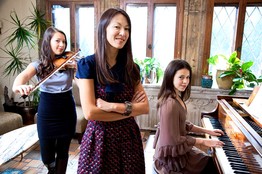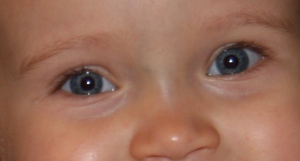
This is a great piece from “Big City Moms” concerning fitness for children.
“Big City Moms” is a wonderful resource for parenting especially for anyone living in the NYC area. You are really missing something if you do not check it out and join their Facebook page.
Fitness Ideas for Your Child
Robin Saks Frankel and James Christie
SocRoc
When you want to get your child exercising the most important goal is to have fun! Smile, laugh, act goofy, create storylines and get excited along with your kid. Children learn by watching and mirroring what you do. If you can teach your preschooler even one of the following movements it will be well worth it. Not only will you be improving their coordination, balance and posture you will also be developing great fitness habits which can last a lifetime.
1. The Airplane. This game is great for developing posture since the emphasis is on the lower and upper back. Have your little one lie face down and ask them to put arms out to the side like they have wings. Then ask her to lift up her arms and legs and balance on her belly for five seconds. Create a storyline and add sound effects: “Ok sweetie we are going to go flying. Waaaay up in the sky like an airplane-Ready? Liftoff and we are Flying! ”
Aim for 3- 5 repetitions.
2. Kick a Ball. A soccer ball, volleyball or beach ball is ideal. But any type of ball that isn’t too hard. Have your child kick the ball to you or try having them aim for a small goal. You can use any type of marker for a goal, like aiming between a pair of shoes or into an open duffle bag. Gently guide him to kick the middle of the ball with the top of their foot (where their shoelaces are) with his toes pointed down. You want to encourage him not to kick with the ball with his toes. Cheer like crazy and give a great big hug after a successful kick. Get excited and say” Goaoooooool!!! .”You did it!! You did it” when he scores.
The only thing worse than being stuck indoors because it’s a searing, hot, humid mess outside is being stuck indoors with a toddler and a baby because it’s a searing, hot, humid mess outside. I have a two and a half year old and a 10 month old and lately it’s been a major challenge to find some weekend activities we can actually do. The playground is only a great option if it’s below 90, otherwise it’s just too hot and my kids both take afternoon naps so all-day excursions aren’t really an option for us. We’ve gone to the Children’s Museum and the American Museum of Natural History umpteen times which takes care of the morning but come post-nap time we are all going a little stir-crazy. The key to keeping my kids happy in those few hours between the afternoon nap and bedtime is having some physical activity. But when it’s too hot to run around outdoors and most indoor playgyms are closed on weekend afternoons we need to get inspired. I’m about as creative as a lump of dirt so I sought professional advice.
James Christie, a former professional soccer player and Certified Fitness Trainer for kids and adults runs the kids’ Soccer and Fitness program SocRoc in New York City.
He gave me a list of six great ways to keep my kids moving, even if we’re stuck indoors.
-Robin Saks Frankel
Fitness Ideas for your Child-Ages 2-4 years old
When you want to get your child exercising the most important goal is to have fun! Smile, laugh, act goofy, create storylines and get excited along with your kid. Children learn by watching and mirroring what you do. If you can teach your preschooler even one of the following movements it will be well worth it. Not only will you be improving their coordination, balance and posture you will also be developing great fitness habits which can last a lifetime.
1. The Airplane. This game is great for developing posture since the emphasis is on the lower and upper back. Have your little one lie face down and ask them to put arms out to the side like they have wings. Then ask her to lift up her arms and legs and balance on her belly for five seconds. Create a storyline and add sound effects: “Ok sweetie we are going to go flying. Waaaay up in the sky like an airplane-Ready? Liftoff and we are Flying! “
Aim for 3- 5 repetitions. 2. Kick a Ball. A soccer ball, volleyball or beach ball is ideal. But any type of ball that isn’t too hard. Have your child kick the ball to you or try having them aim for a small goal. You can use any type of marker for a goal, like aiming between a pair of shoes or into an open duffle bag. Gently guide him to kick the middle of the ball with the top of their foot (where their shoelaces are) with his toes pointed down. You want to encourage him not to kick with the ball with his toes. Cheer like crazy and give a great big hug after a successful kick. Get excited and say” Goaoooooool!!! .”You did it!! You did it” when he scores. 3. Animal Fitness. Have your child imitate his favorite animal’s movements. Try: Running fast and roaring like a tiger. Walking slow like a elephant and swing your arms like a trunk . Flapping your wings like a butterfly. Hopping like a bunny rabbit and using your fingers to make bunny ears. Crawl like a puppy dog and wag your tails. The possibilities are endless. You might have better luck with a 3 and 4 year old playing this game but give it a try with a younger child anyway. It can’t hurt and you will get some good exercise demonstrating different animal movements. 4. Musical Fitness. Have a dance party in your home. Get your child walking, running and dancing to his favorite songs. Nothing is more effective then music when it comes to getting your child moving. One game that I’ve found effective is setting up a circle with cones as markers.I have the kids run around the circle to music and when the music stops, the kids have to stop or sit down. Eventually you can progress up to running in and out of the cones by zigzagging or hopping over the markers like bunny rabbits or kangaroos. Give it a try!
5. Stand on one leg. The focus here is on balance, coordination and core strength. If your child is under 3 years old you may have to support him and hold his
arms. Have your child stand on one leg for 3-5 seconds at a time and ask them to suck in their belly button for balance. Make it fun by demonstrating what happens when you lose y our balance or don’t suck in your tummy. Say “Whoa!” and “Don’t fall down, suck in that belly.” while swaying back and forth and pretending to lose your balance. Believe me, kids love it. 6. Pushups. It’s never too early to strengthen the upper body and anyone can
do a pushup, you just have to modify them for the younger set. Have your child
get on all fours with her knees about 6-12 inches from their hands. Ask her to bend her arms and lower her chest and torso a couple of inches from the ground and then push back up. Aim for about 3-5 repetitions. Make sure you cheer like crazy each time and give a great big hug after they have finished.
James Christie is a Former Professional Soccer Player and a Certified Fitness Trainer for kids and adults. He runs the Popular Soccer and Fitness program SocRoc in New York City for kids ages 2 thru 14 years old. James would be happy to provide a free trial SocRoc class for your child in Central Park or at one of SocRoc’s indoor locations. Please call or Email James with any Soccer-Fitness questions.917-703-0409 or jcsocroc@gmail.com WWW.JCSOCROC.COM








